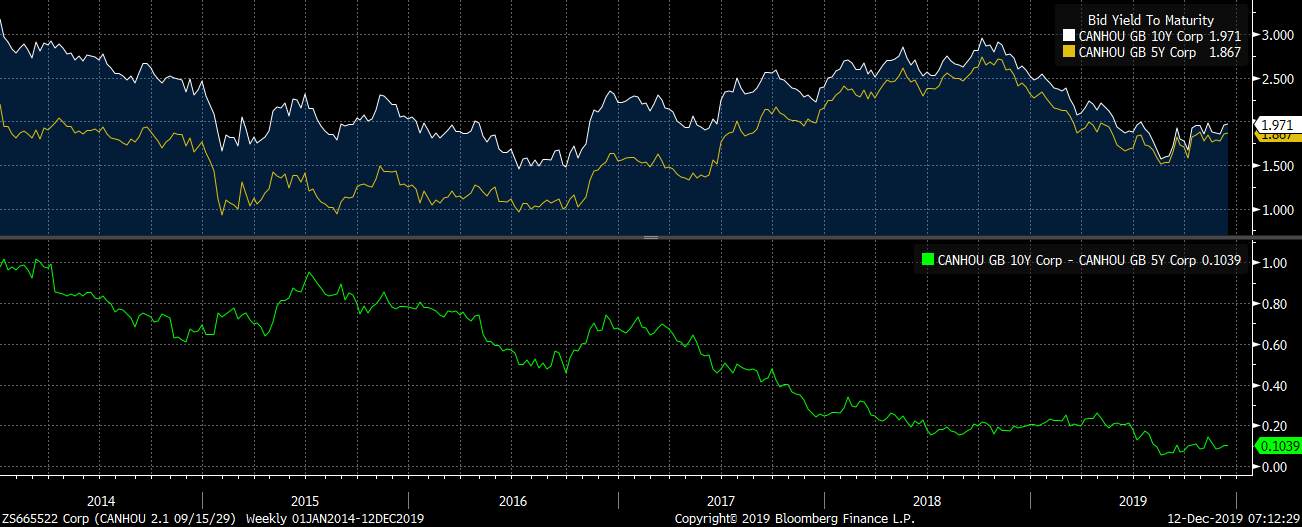The difference between a lender’s cost to lend for 10 years versus five years is near an all-time low.
Yet, 10-year rates remain too high to attract much interest.
This chart below is one example of how competitive basic 10-year funding costs have become. It shows a long-term view of Canada Mortgage Bond (CMB) yields. Lenders use CMBs to fund insured 5- and 10-year fixed mortgages.

Look how tight 10-year and 5-year yields have become. Just 10 basis points.
Meanwhile, 10-year mortgages are still priced at least 40 bps above 5-year fixed mortgages.
Why? The #1 reason remains the law. The Interest Act’s Section 10(1) (the “5-year rule”) lets people break 10-year terms after five years for a puny 3-months’ interest penalty. That’s generally less (often much less) than the costs lenders incur to re-lend those same mortgage funds.
In the U.S., there’s no such law. You can find fully open 10-year fixed terms with no penalties for 2.89%, even though their 10-year bond yields are 20 bps higher than Canada’s. Mind you, U.S. closing costs are materially higher.
 And lenders have another challenge: people prepay when it’s in their best interests. So, if interest costs soar, more people hold on to long-term mortgages with great rates. If interest costs dive, people bail on those mortgages and leave the lender holding the bag. The lender is then unable to re-lend those funds at similar rates. This adverse selection problem makes 10-year mortgages all the more costly for lenders.
And lenders have another challenge: people prepay when it’s in their best interests. So, if interest costs soar, more people hold on to long-term mortgages with great rates. If interest costs dive, people bail on those mortgages and leave the lender holding the bag. The lender is then unable to re-lend those funds at similar rates. This adverse selection problem makes 10-year mortgages all the more costly for lenders.
The Price of Great 10-Year Rates
People keep debating whether the law needs to change to allow lenders to charge normal penalties on decade-long terms. If that happened, caveat emptor or not, many borrowers would be blindsided by enormous 10-year mortgage penalties (assuming 10-year rates dropped enough to make them attractive in the first place).
On the other hand, letting risk-averse homebuyers lock in for a decade at near-5-year fixed prices also has merit.
Maybe the solution is a penalty cap (e.g., 3% of principal) plus a requirement that lenders offer three things to qualified 10-year borrowers who refinance before maturity:
- published discounted rates
- fair porting options (e.g., 90 days minimum to port your mortgage), and
- fair blend-and-increase (refinance) options.
Are we holding our breath that this might happen? Not in the least. But if policy-makers like Bank of Canada head Stephen Poloz want to see longer mortgage terms, and if scrapping the Interest Act’s 5-year rule is the only way to do it, the government will have to protect consumers somehow.

 log in
log in